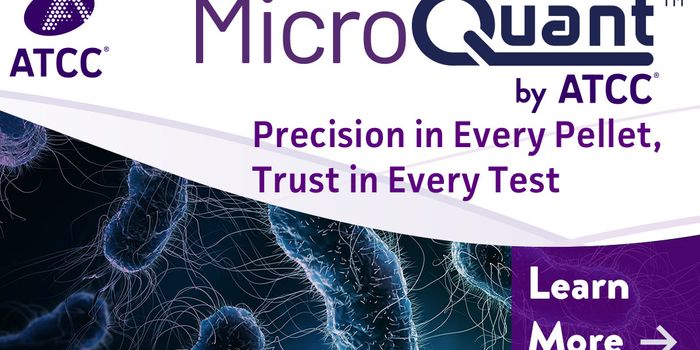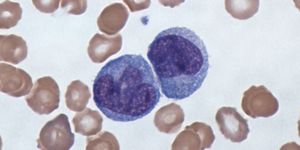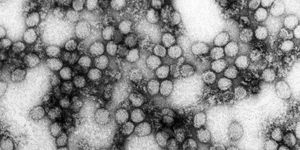Researchers at the National Institute of Allergy and Infectious Disease knew that some viruses - herpes simplex virus, for example - integrate their own genomes into their host’s genome, where viral gene expression is subject to host epigenetic regulation. They also knew that some cancer drugs work by targeting epigenetic modifications that make cancer cells proliferate. Putting two and two together, they reasoned that these epigenetic drugs might also work as antiviral drugs.
Image: Thermo Fisher Scientific
Principal investigator Thomas Kristie and his team investigated the antiviral activity of EZH2/1 inhibitors. EZH 2 and 1 are histone methyltransferases that generate H3K27 methylation domains which repress gene expression. Some cancers are driven by gain-of-function mutations in EZH2.
To determine if EZH2/1 inhibitors could suppress herpes simplex virus (HSV) gene expression and proliferation, the researchers treated human fibroblasts with 1 of 3 EZH2/1 inhibitors for 5 hours and infected the cells with HSV. Sure enough, the inhibitors suppressed HSV gene expression.
Next, they wanted to determine if the EZH2/1 inhibitors induced an antiviral state in the host cells that suppressed HSV. Indeed, they found an increase in the expression of IFN-alpha and IL-8 (antiviral cytokines) in cells treated with the EZH2/1 inhibitor GSK126. Further investigation showed that cells produced an antiviral response within just 2 hours of being treated with the inhibitor.
Because the EZH2/1 inhibitors induced a general antiviral state, the researchers wanted to know if these drugs could suppress the growth of other viruses. Indeed, the inhibitors suppressed the expression of immediate early genes in Ad5 (an adenovirus) and hCMV. All of the viruses tested up to this point were DNA viruses, so next they determined if the EZH2/1 inhibitors had an effect on RNA viruses.
To test this, they treated human fibroblast with GSK126 and then infected them with Zika virus (an RNA virus). GSK126 reduced the number and size of viral plaques in cell culture, indicating that GSK126 suppressed Zika virus infection.
Finally, they used a mouse model to test the effects of EZH2/1 inhibitors in vivo. The researchers infected the mice with HSV by either the ocular or oral route then treated the animals with an EZH2/1 inhibitor. For the ocular infection, the EZH2/1 inhibitors significantly reduced viral yields within just 3 days of treatment. Similar results were reported for the intranasal infection.
So, what’s the next step? According to Kristie, “for emerging viruses for which there aren't any immediate treatments, this may be something that could be used to boost an individual's innate immunity. This could also be a novel way of treating infections by enhancing the infected cell's own ability to fight the virus.”
Sources: mBio and Science Daily









